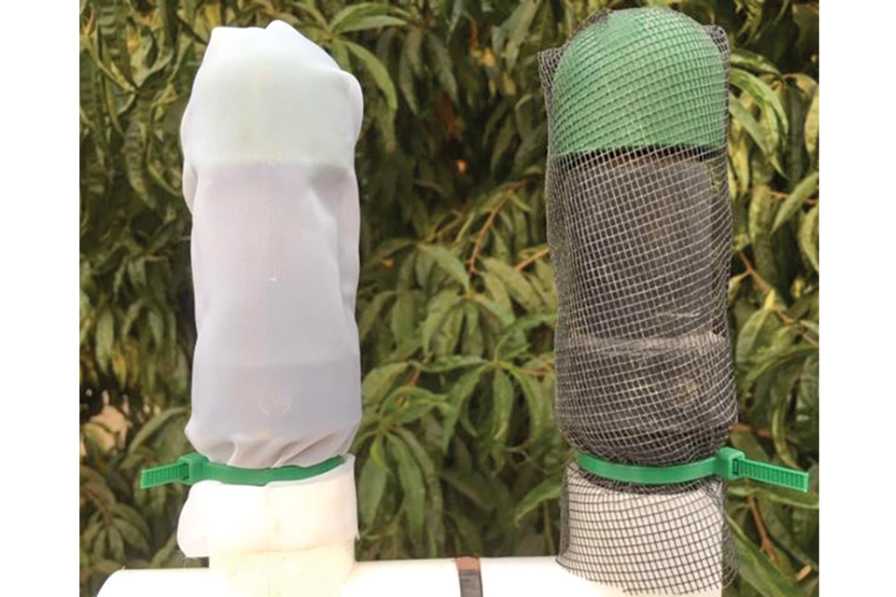Tips to Prevent Sprinklers From Getting Plugged in the Orchard

Many growers are using nylon window-screen material to cover vents in the field and prevent insects from using them as entry points into the irrigation system.
Photo by Wesley K. Asai
Any grower who has used micro-sprinklers or Fan-Jets for irrigating has undoubtedly dealt with the problem of plugged orifices. Sand, algae, or precipitated chemical residues are typically the causes, and there are various methods to rectify these problems. As more orchards are being developed in newer areas, with vastly different cropping histories or micro-environments, more issues with various insect problems are being encountered.
Years ago, when the first types of micro-sprinklers were introduced, they quickly became favorites as egg-laying sites for the fuller rose beetle. As new and improved versions of the sprinklers were developed, including various types of spinners and pop-up devices, the insects quickly figured out how to plug or obstruct these as well. All of these problems were external and required cleaning the spinners.
Lately, I have been hearing more complaints of insects or insect parts plugging micro-sprinklers internally. The belief is that these insects are entering the sprinkler orifice looking for water and getting stuck. The reality is, in most cases, the insects are not entering through the sprinklers. Even the smallest pyramid ants, which are common in nut orchards, cannot fit through the nozzles of typical sprinklers, which may have flow rates ranging anywhere from 8 to 15 gallons per hour.
Other larger insects such as earwigs, cribrate weevils, gray field ants, or spiders are obviously too big to enter through emitters. So how are they plugging these sprinklers? The problem lies with the air vents or vacuum-relief valves in the fields. When the pump is turned off, the plastic ball in these vents drops, leaving access to the water lines. The diameter of this exposed opening may be anywhere from a fraction of an inch to over an inch depending on the size of the vent. Many insects have discovered this source of water in the arid orchards and go into the vents for water. When the pump is turned on, the pressurization pushes these insects — that are in the hoses — to the individual sprinklers and plugs them. You can often find various sizes and life stages of the insects or body parts.
As a solution to this problem, many growers have used nylon window-screen material to cover the vents. While this may work well for the larger insects such as the earwigs and weevils, the pyramid ants go right through them. If ants are the major problem, a finer mesh material needs to be used that will exclude small ants, yet allow air to pass. This nylon mesh material can be found at hobby shops, hardware stores, or online.
Usually, the primary entry points are in the field, but they may also be at larger valve locations such as the sub-mains or, in some cases, even the large vents at the pumping station. If the filtration system is working properly, the water source — well, pond, or canal — should not be a source of the insects.










